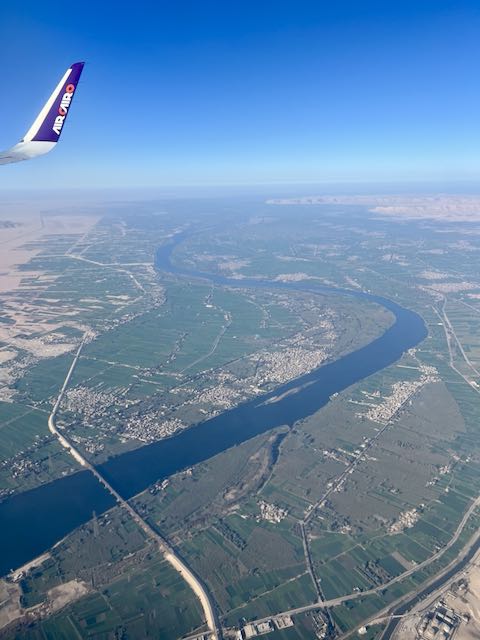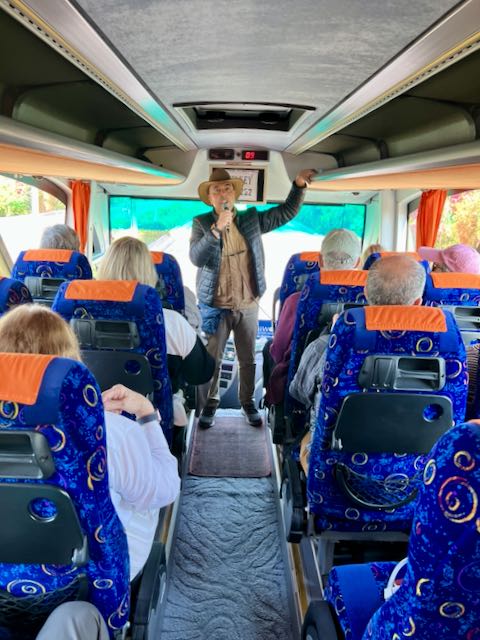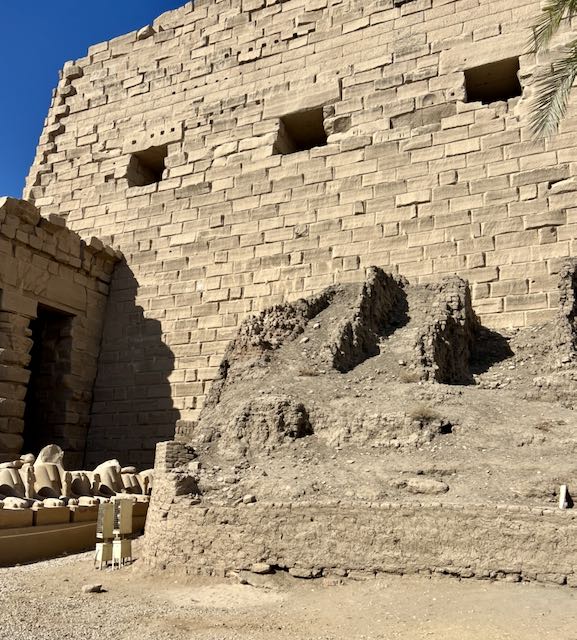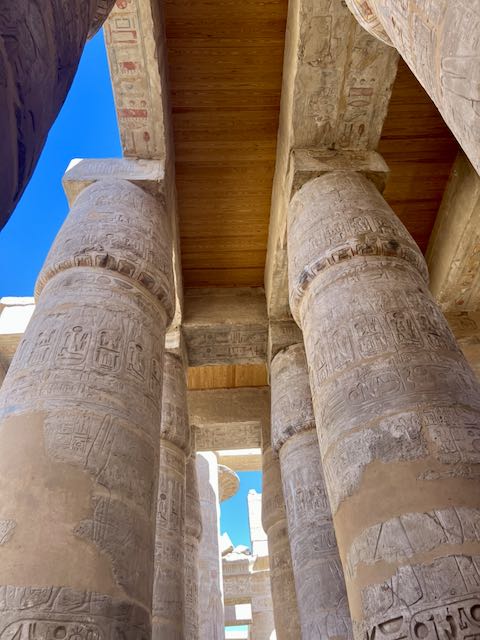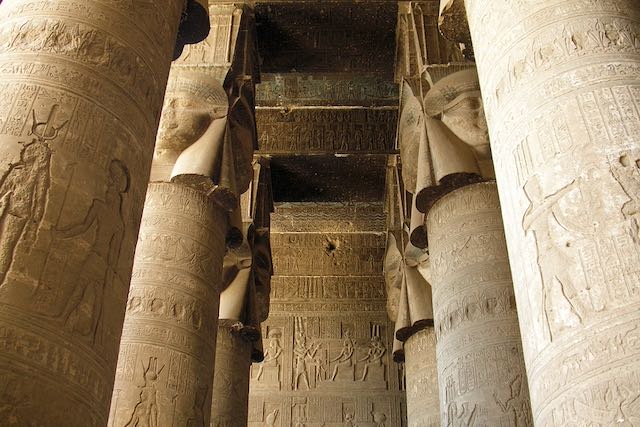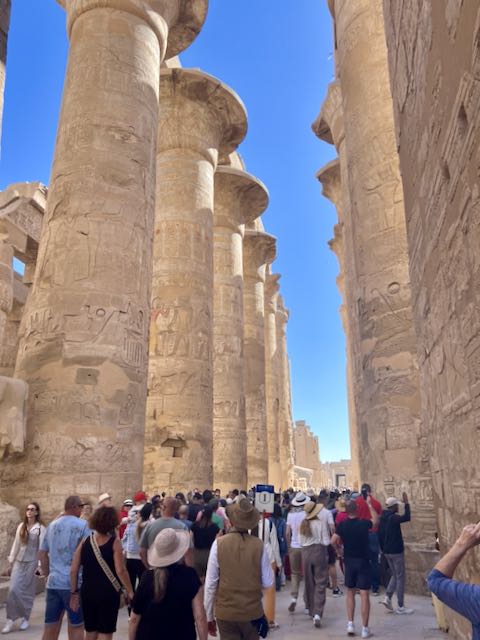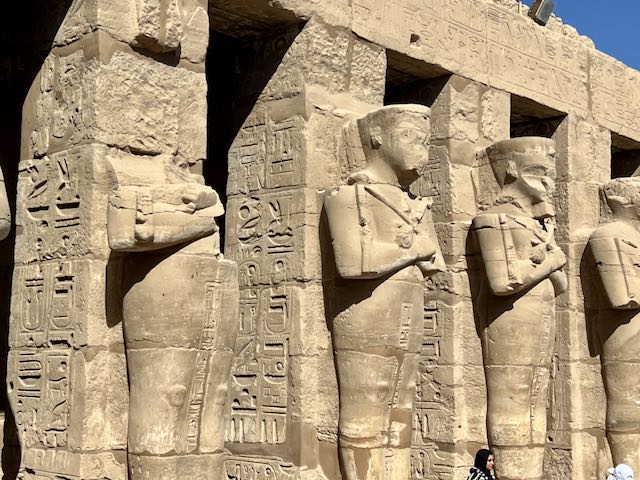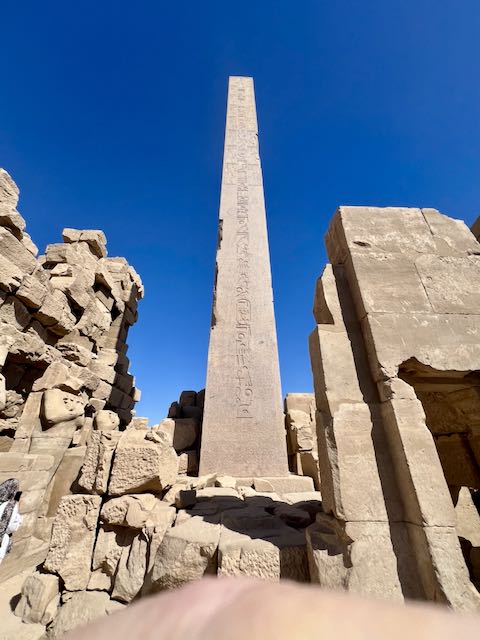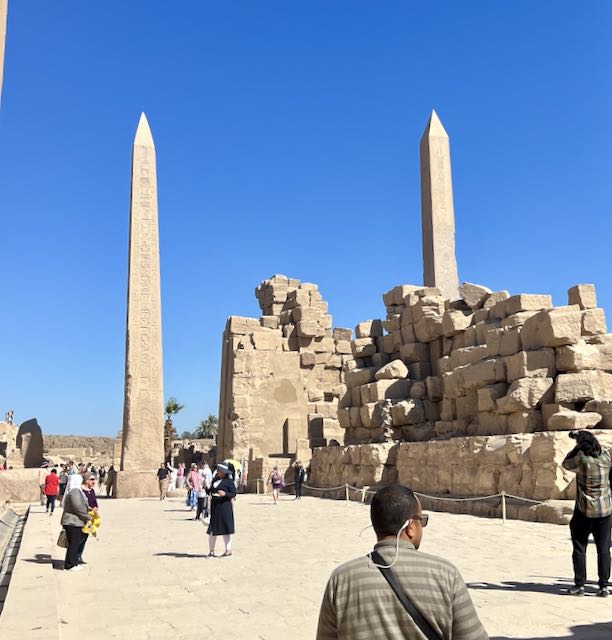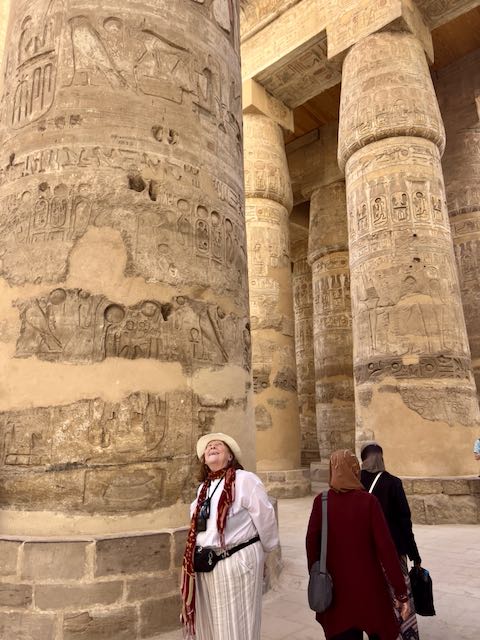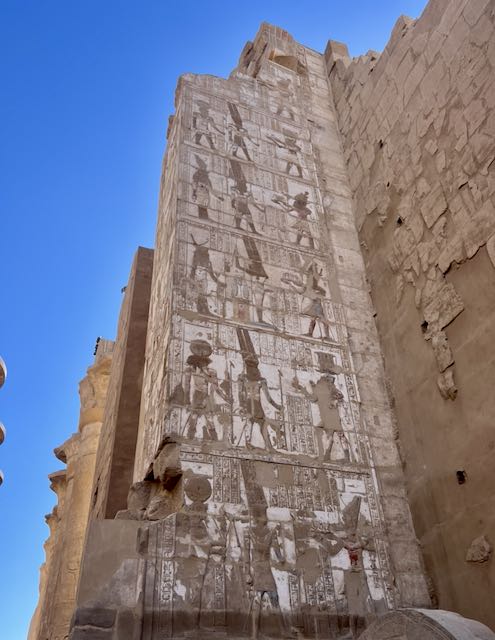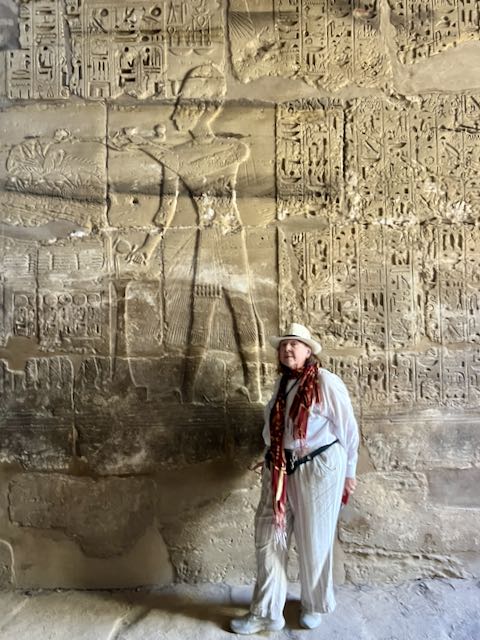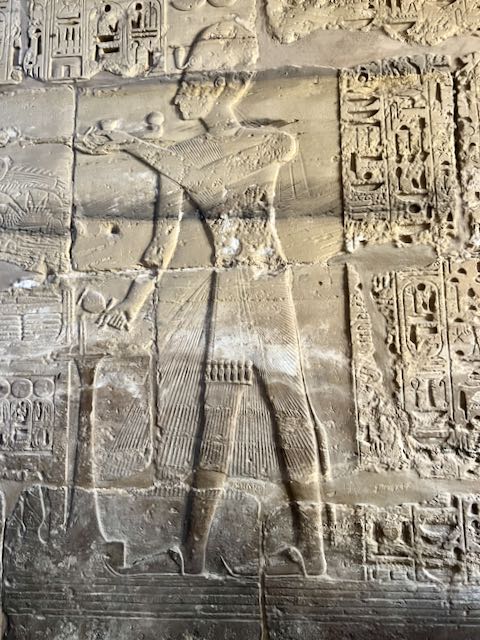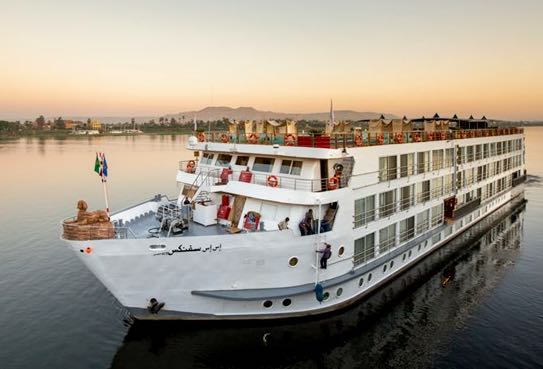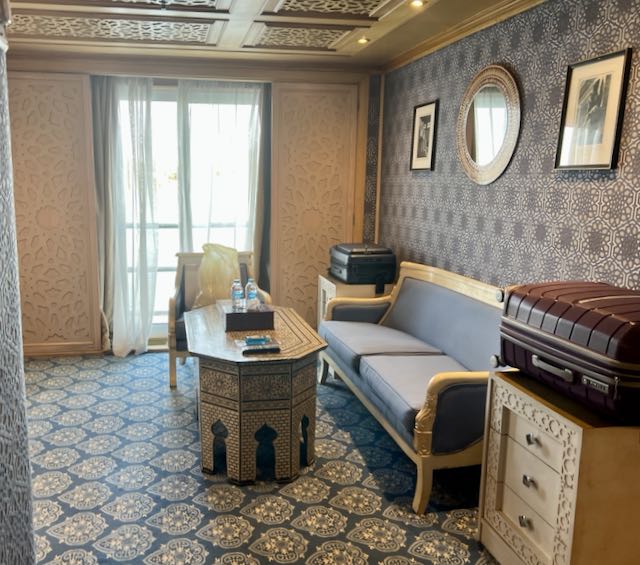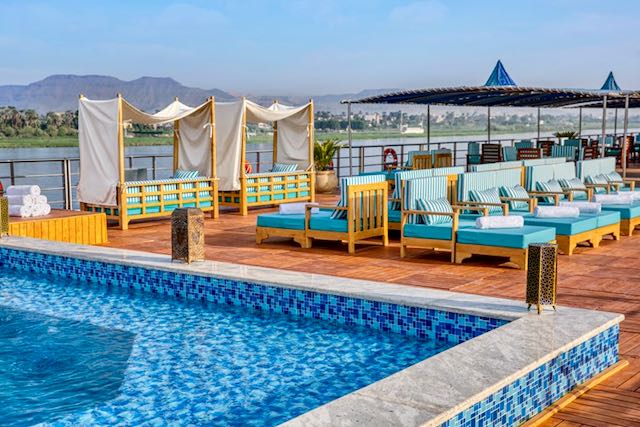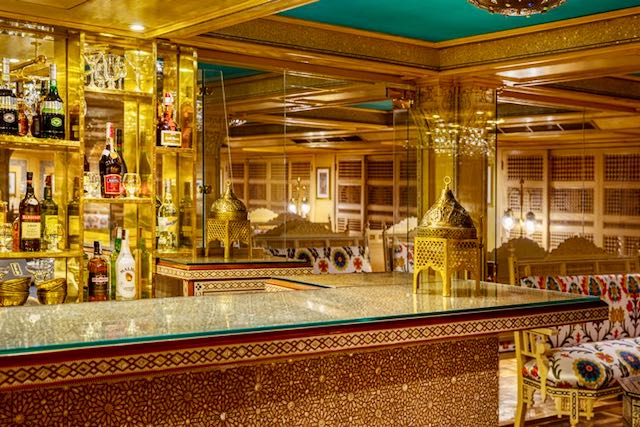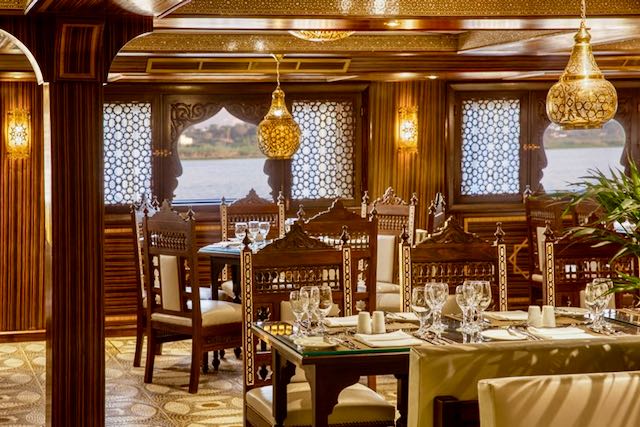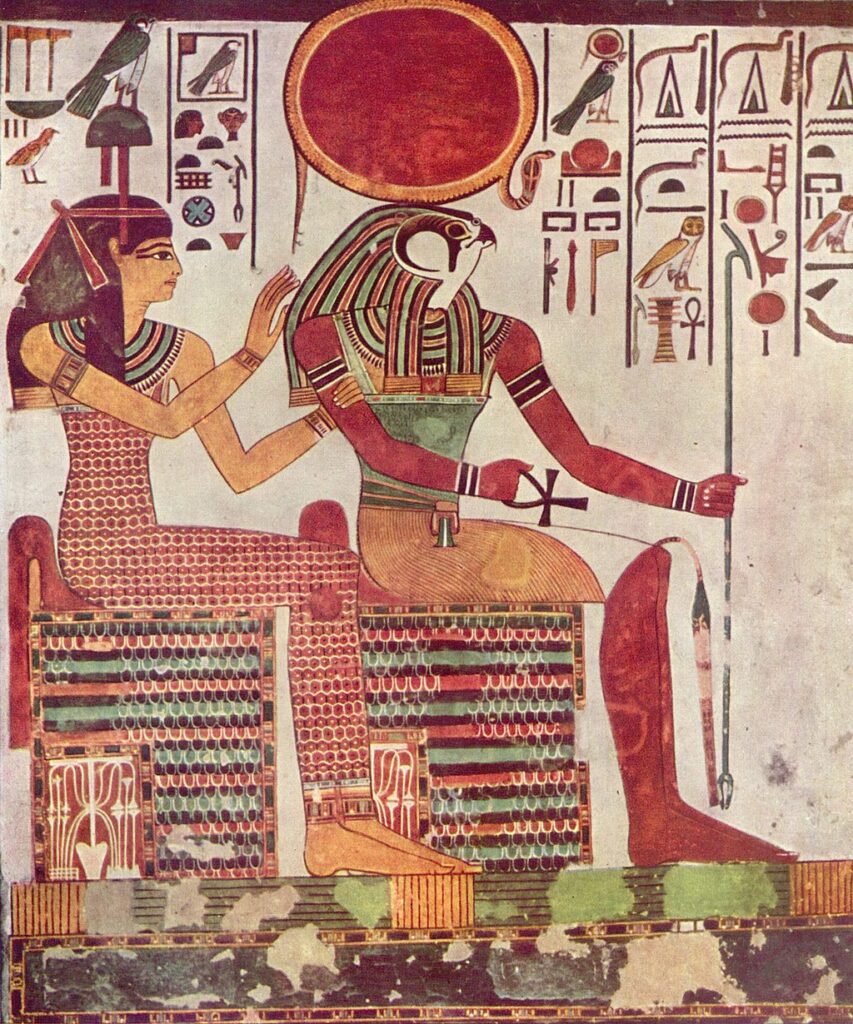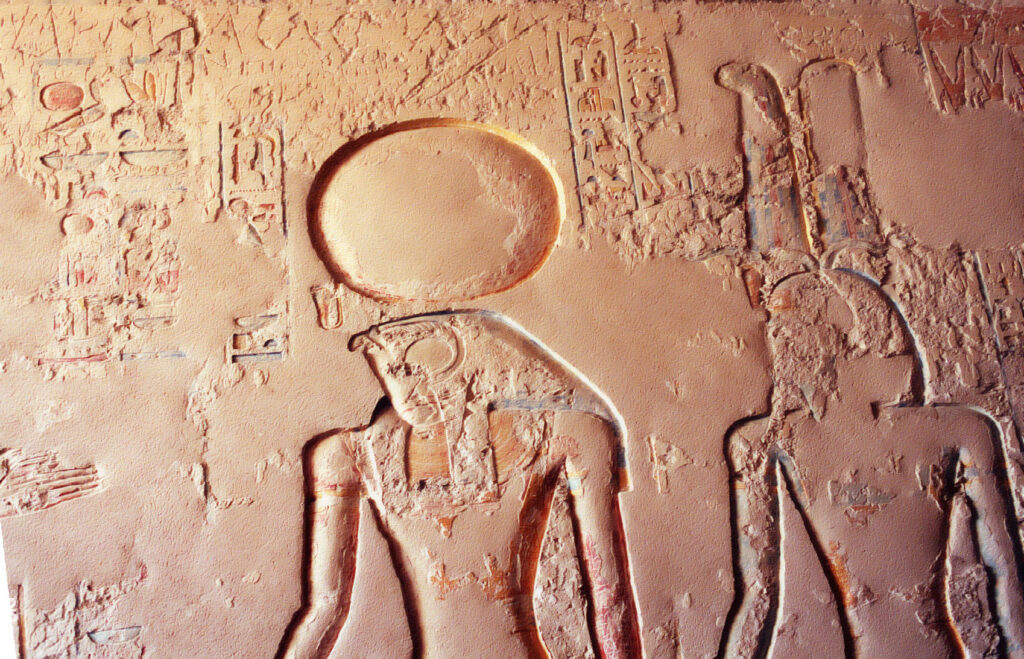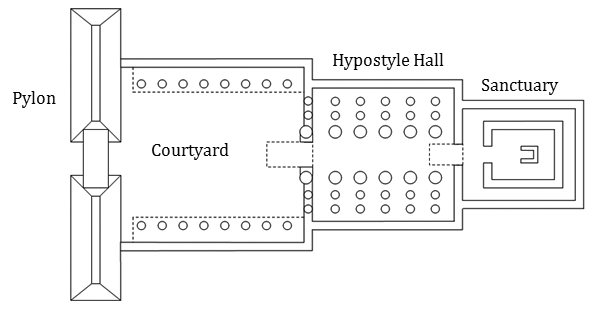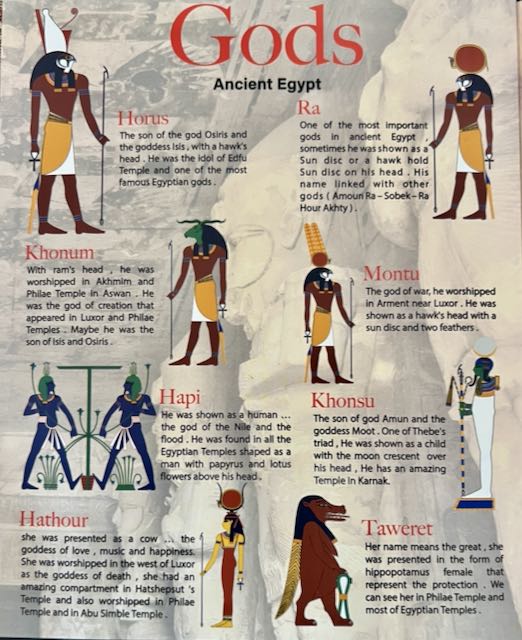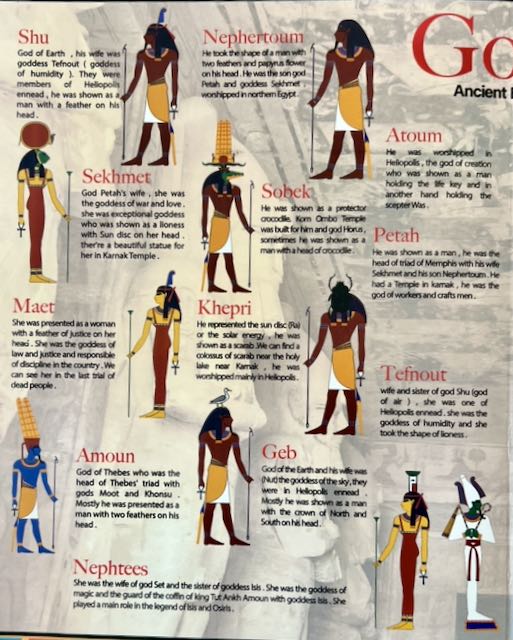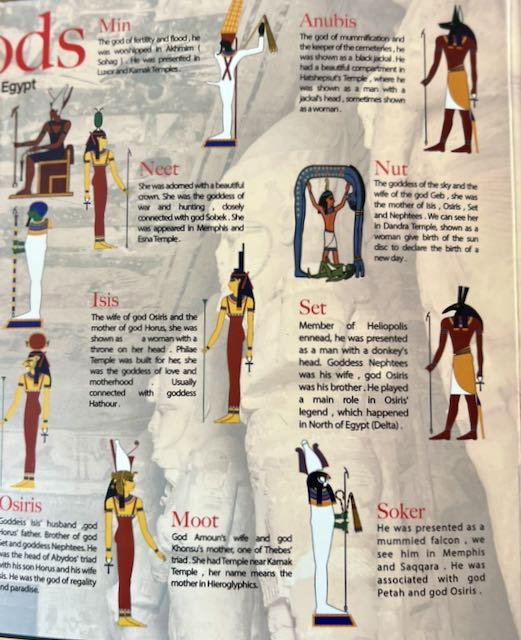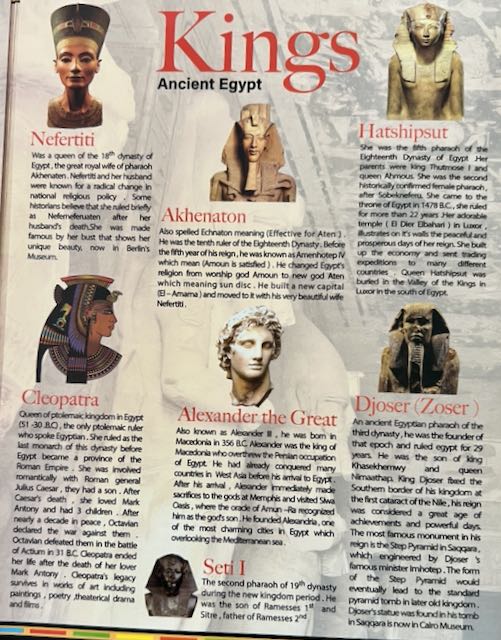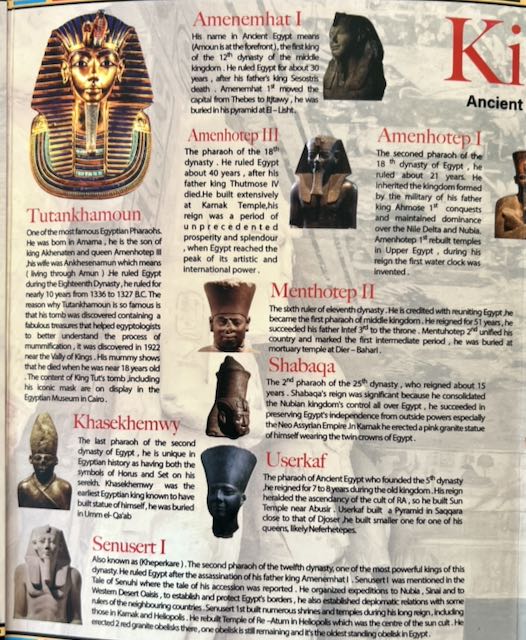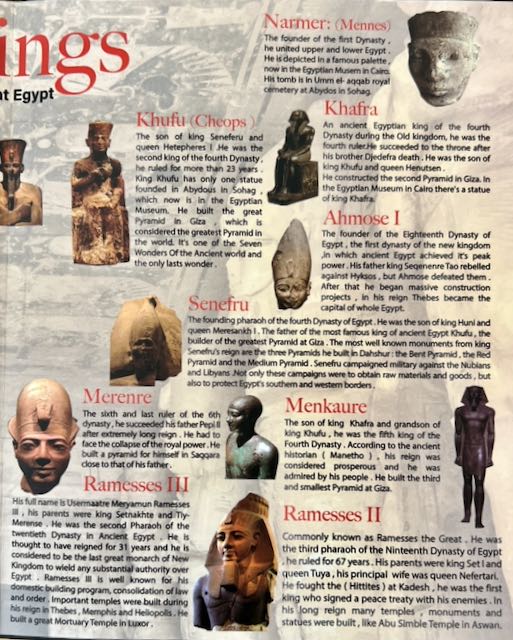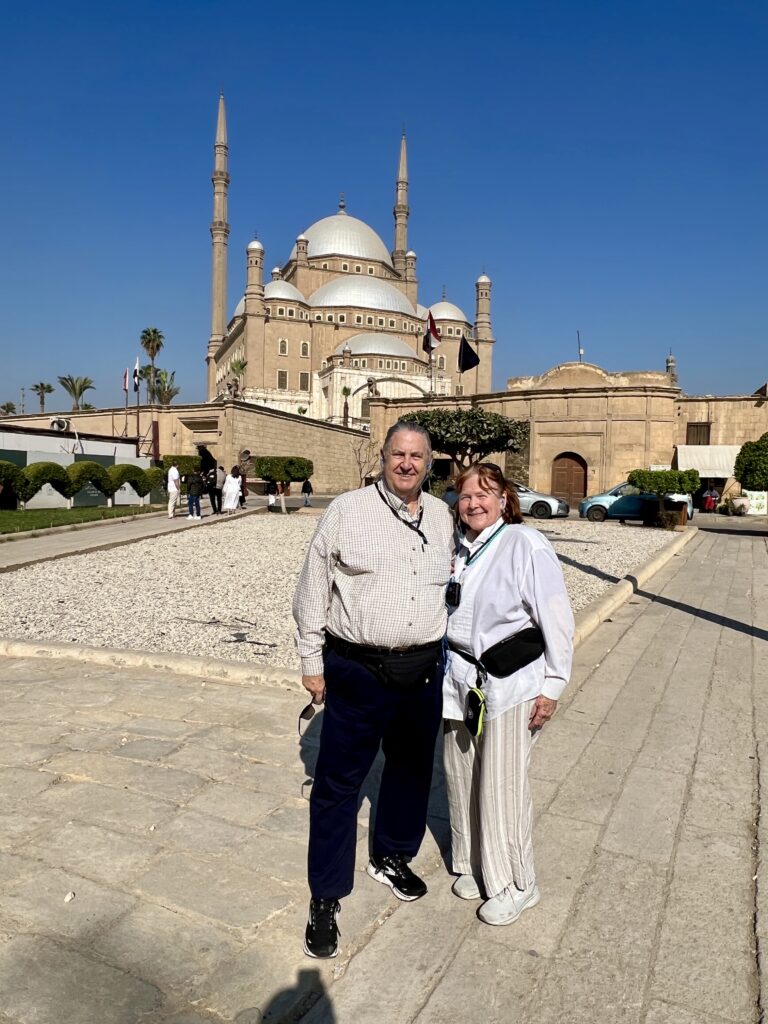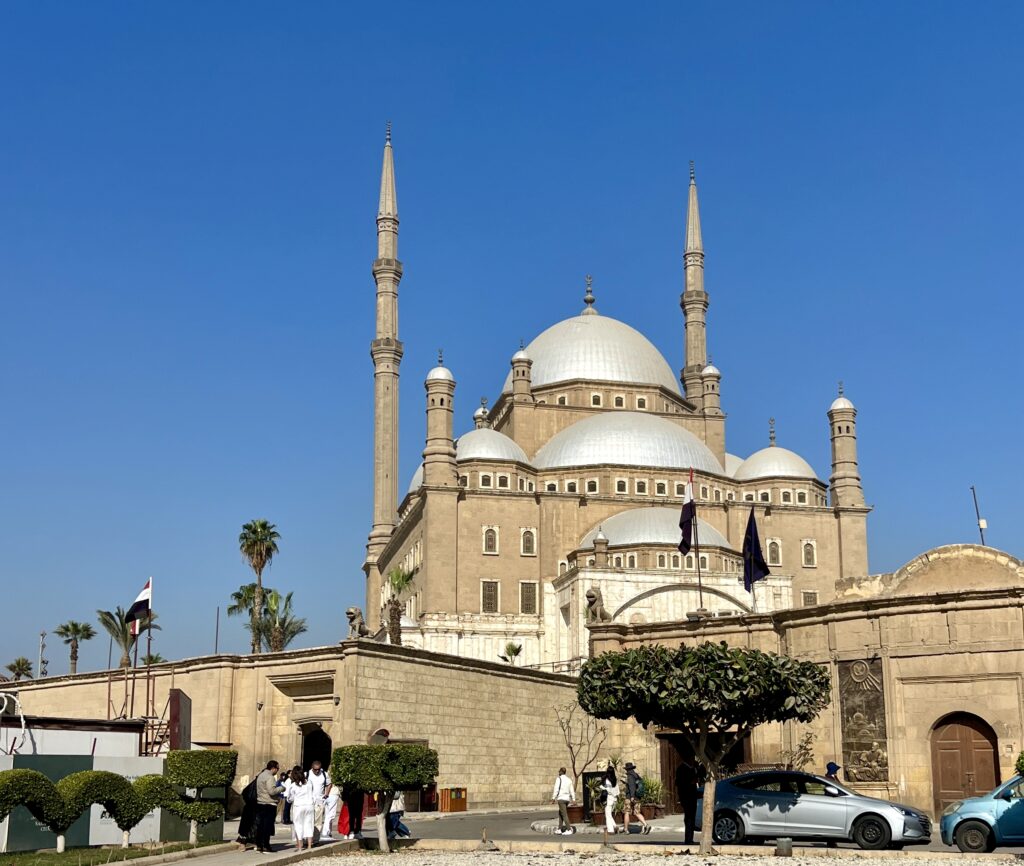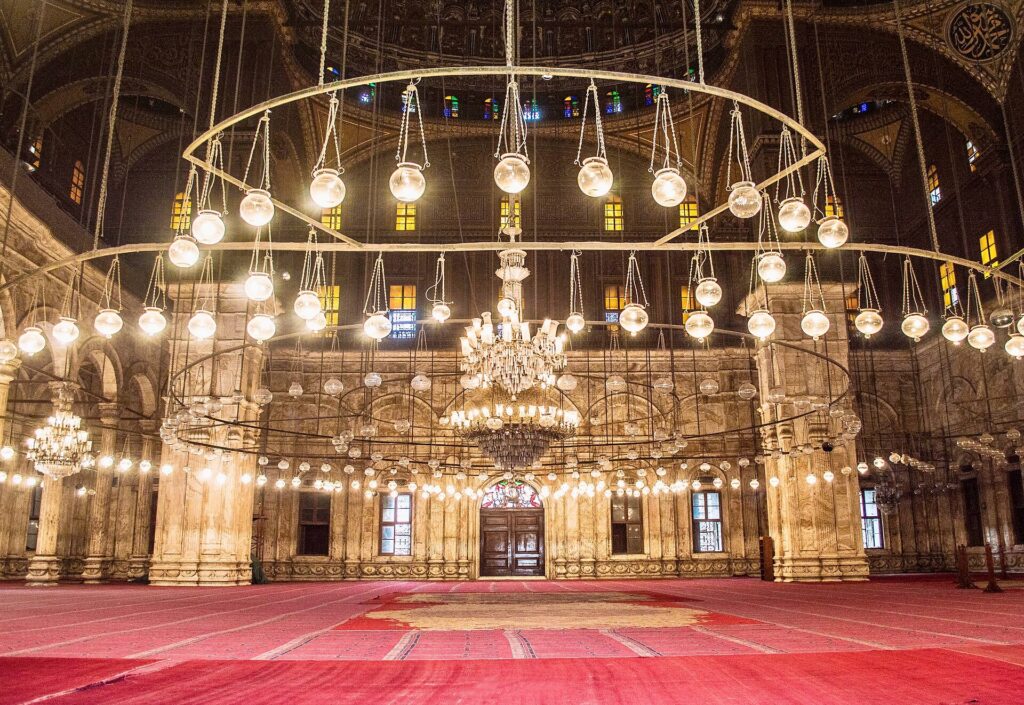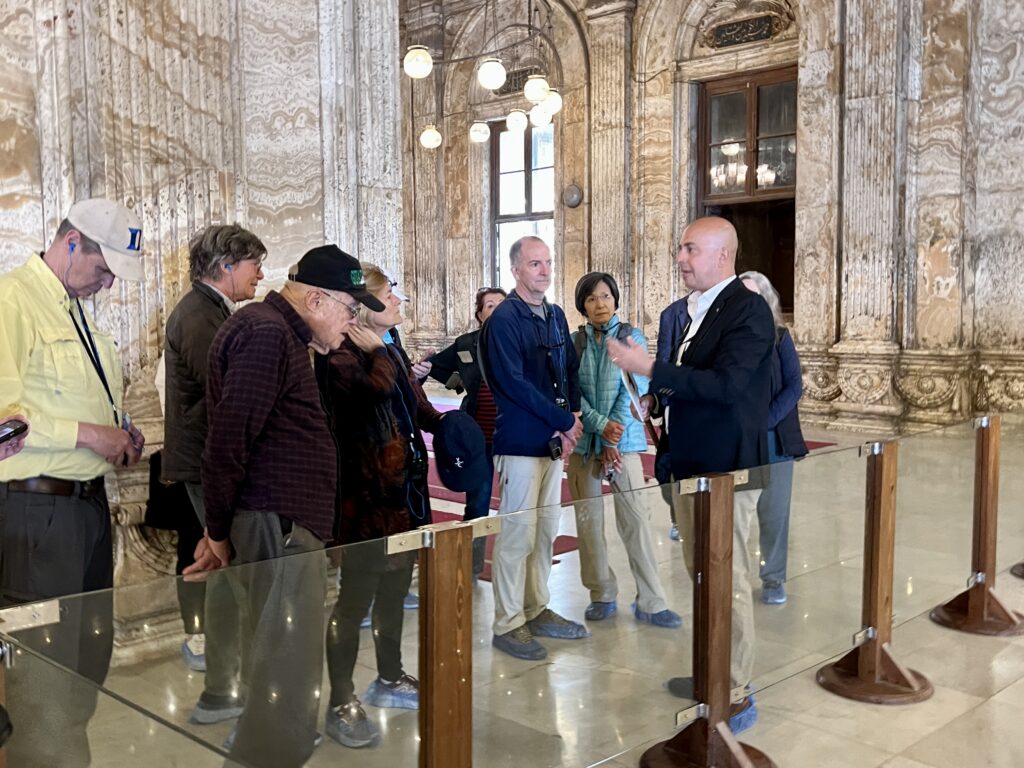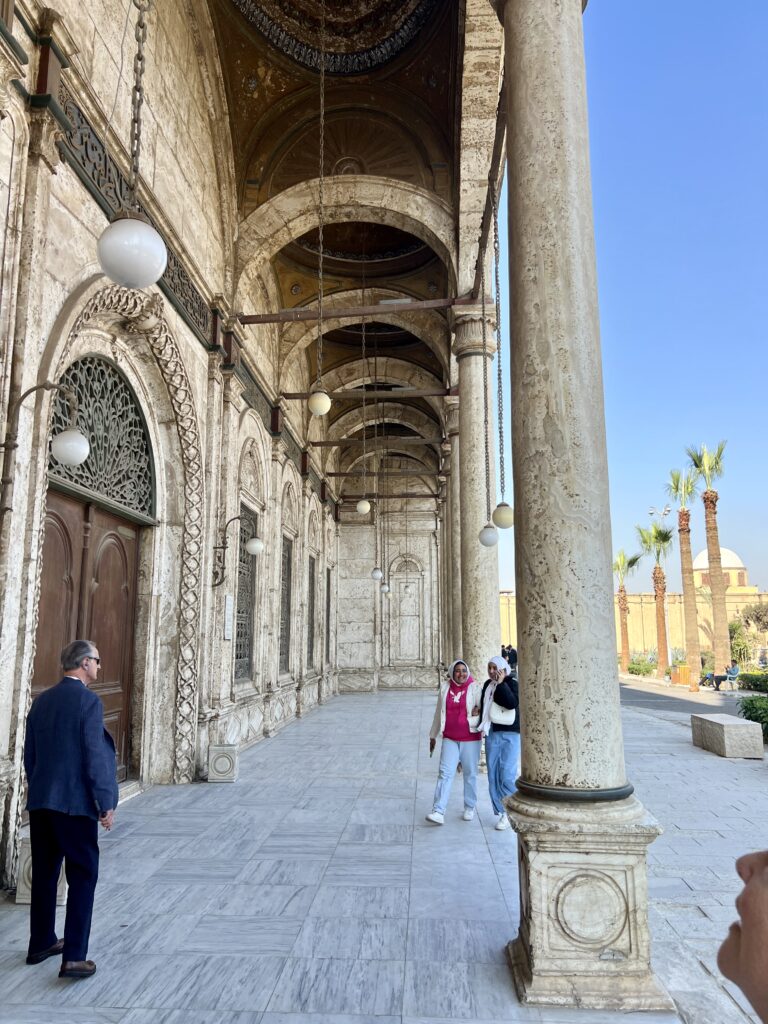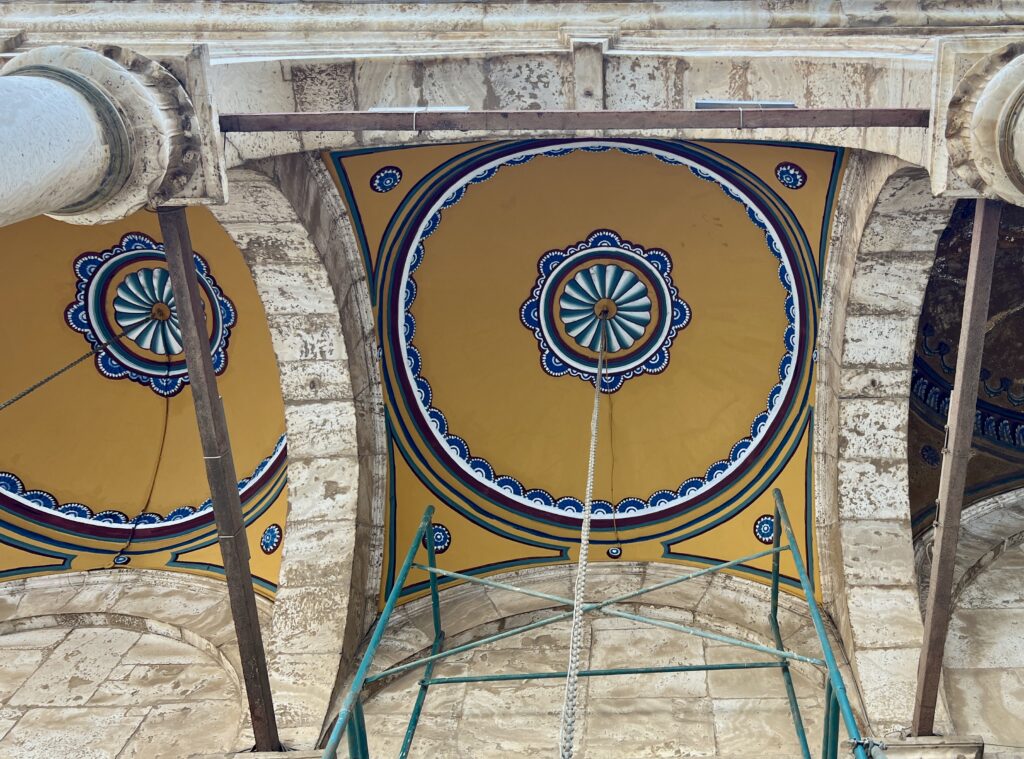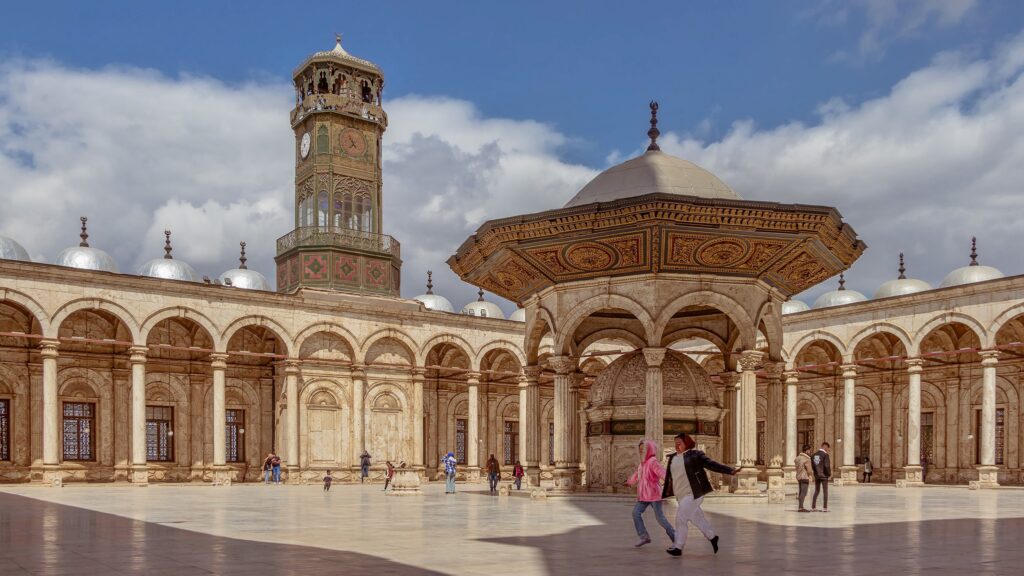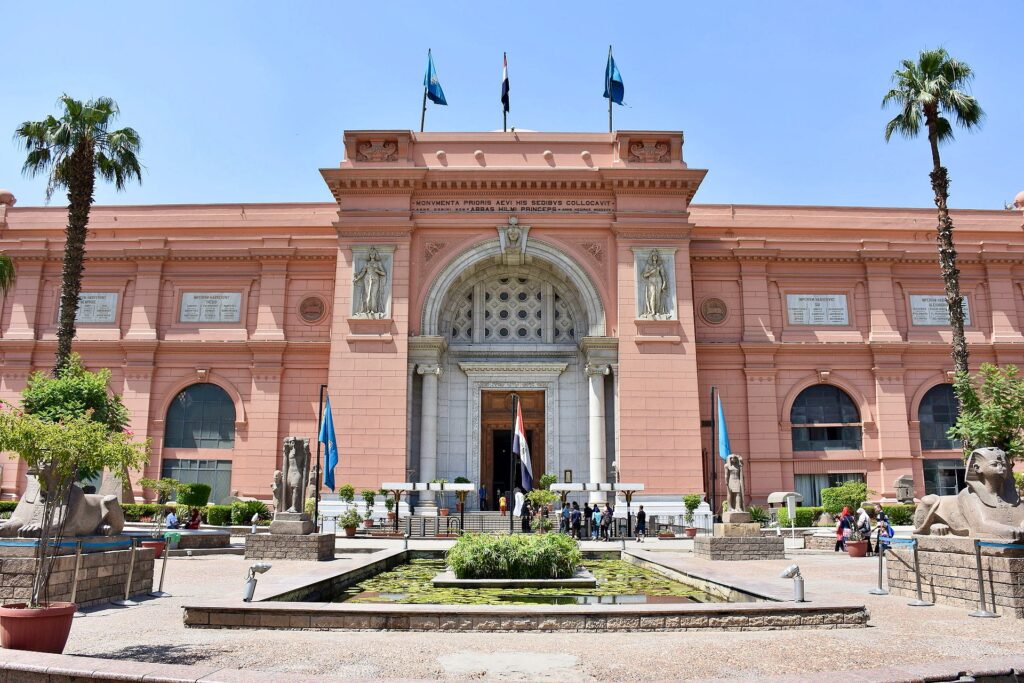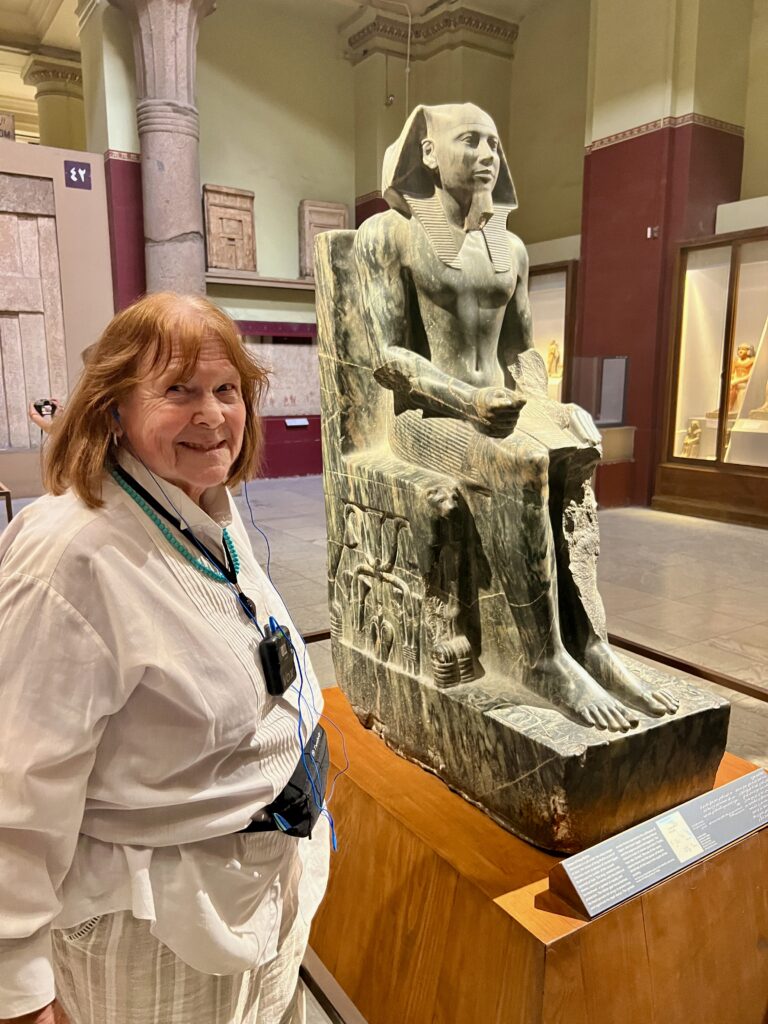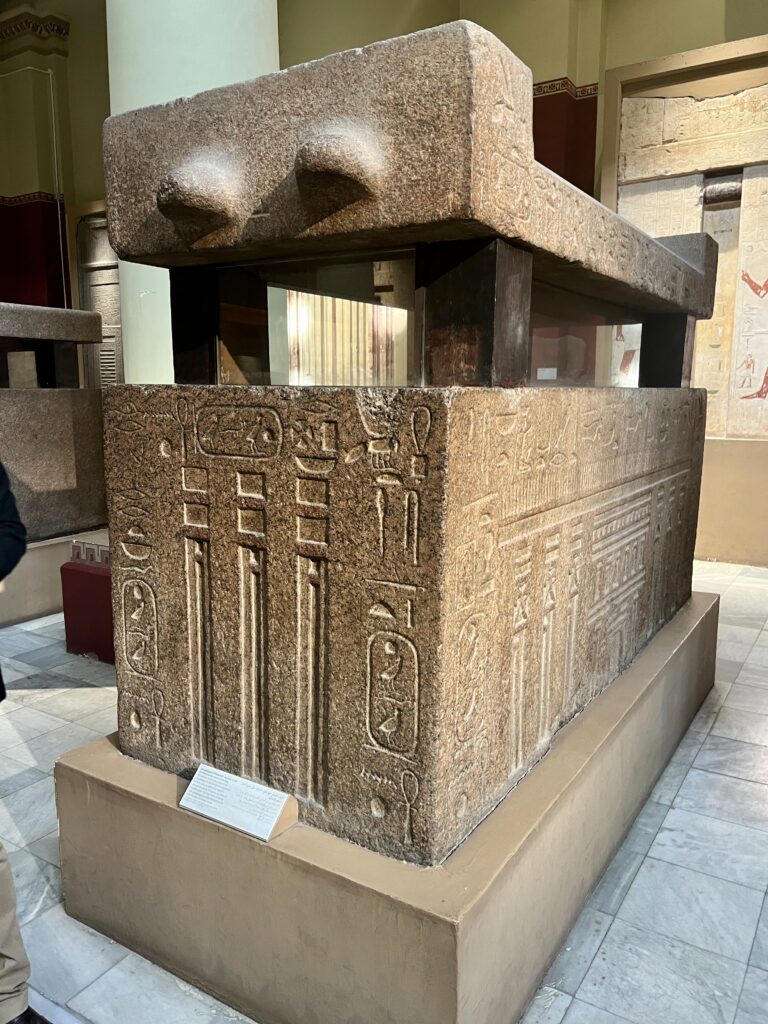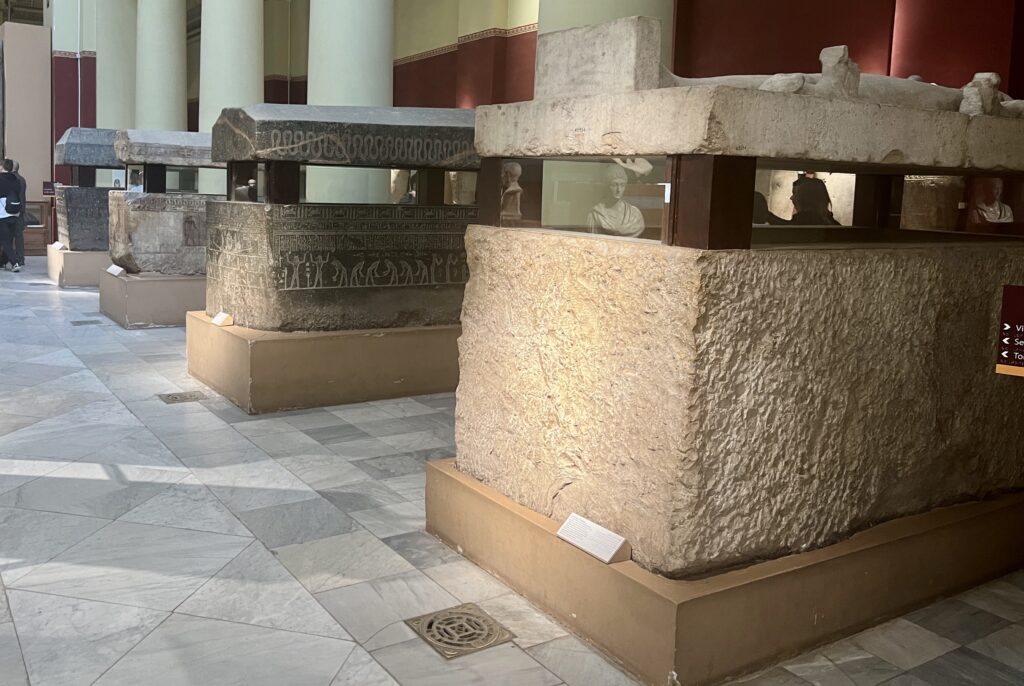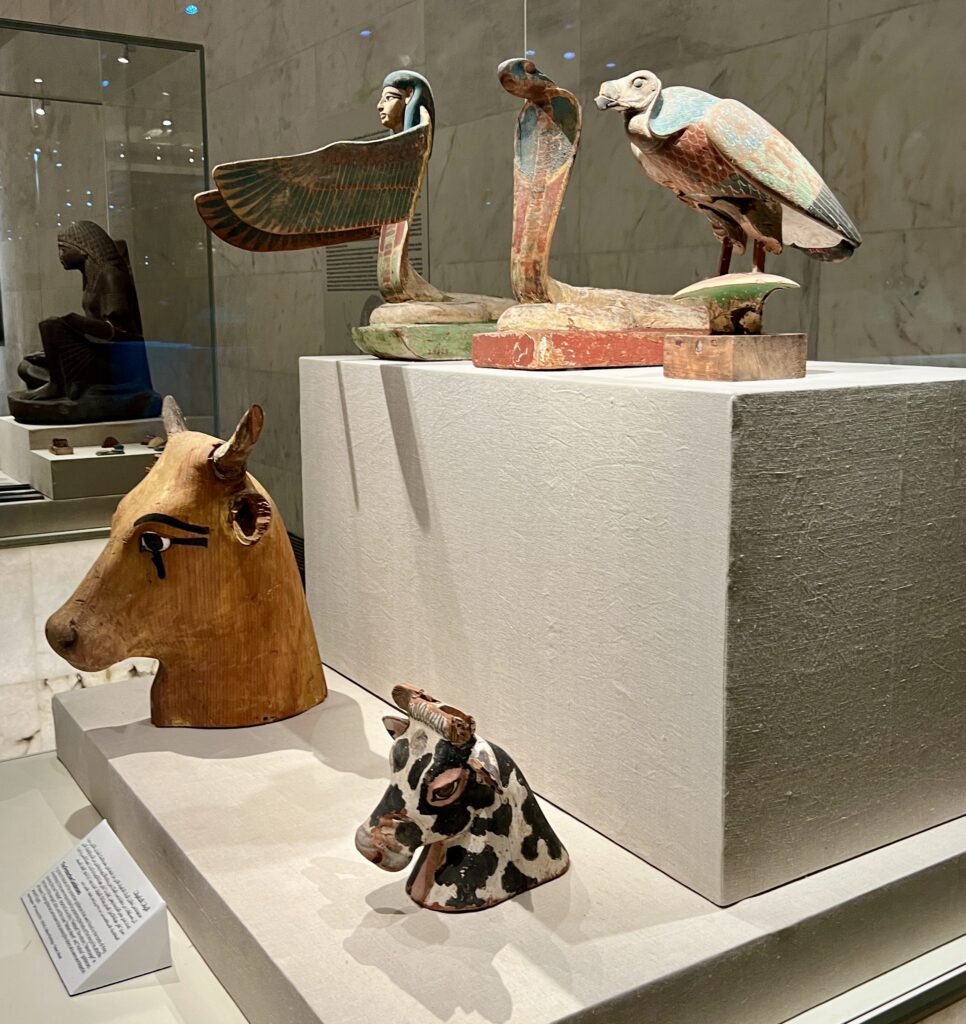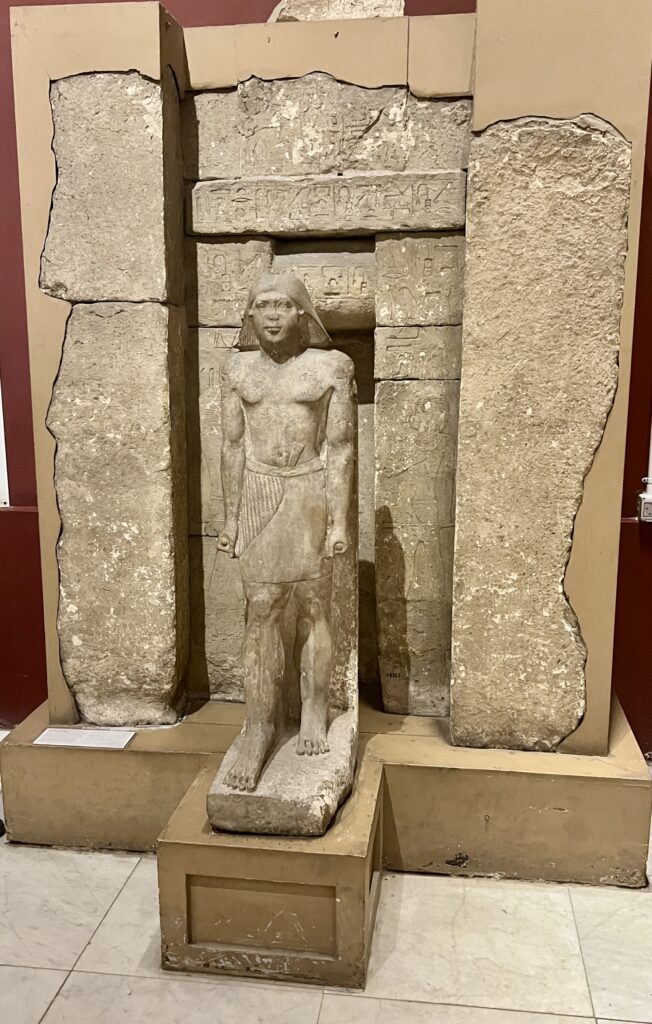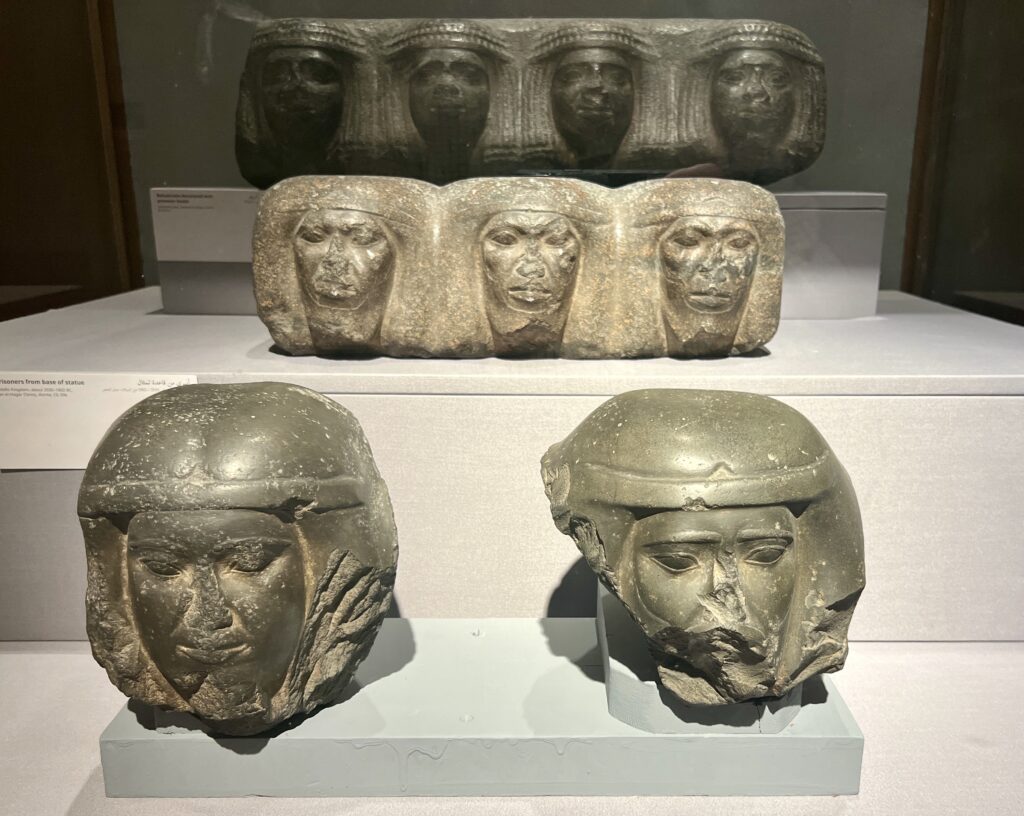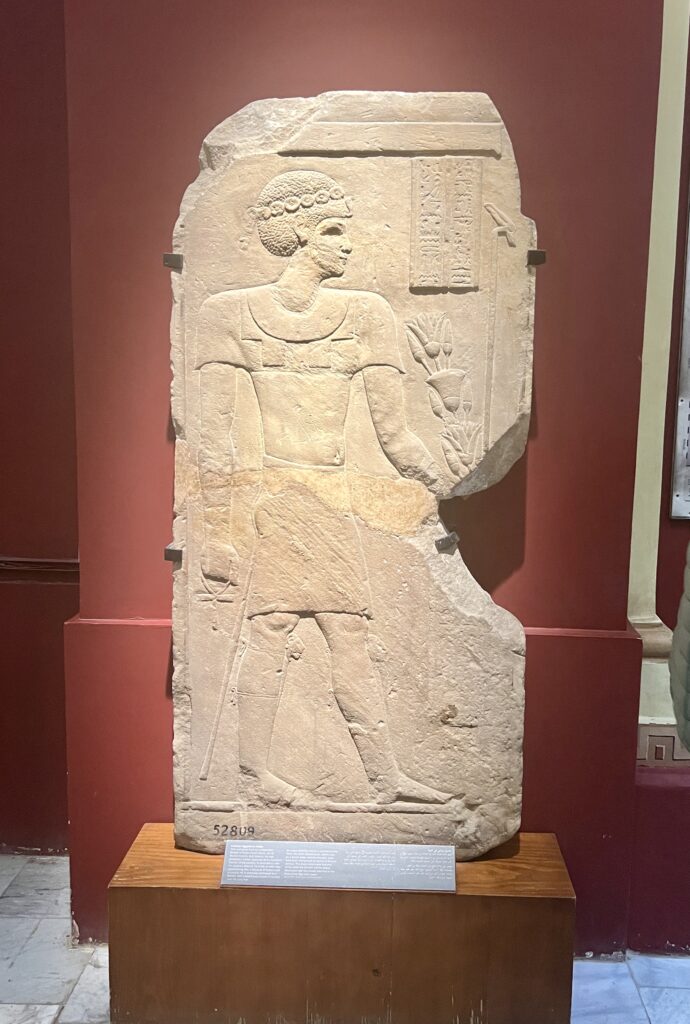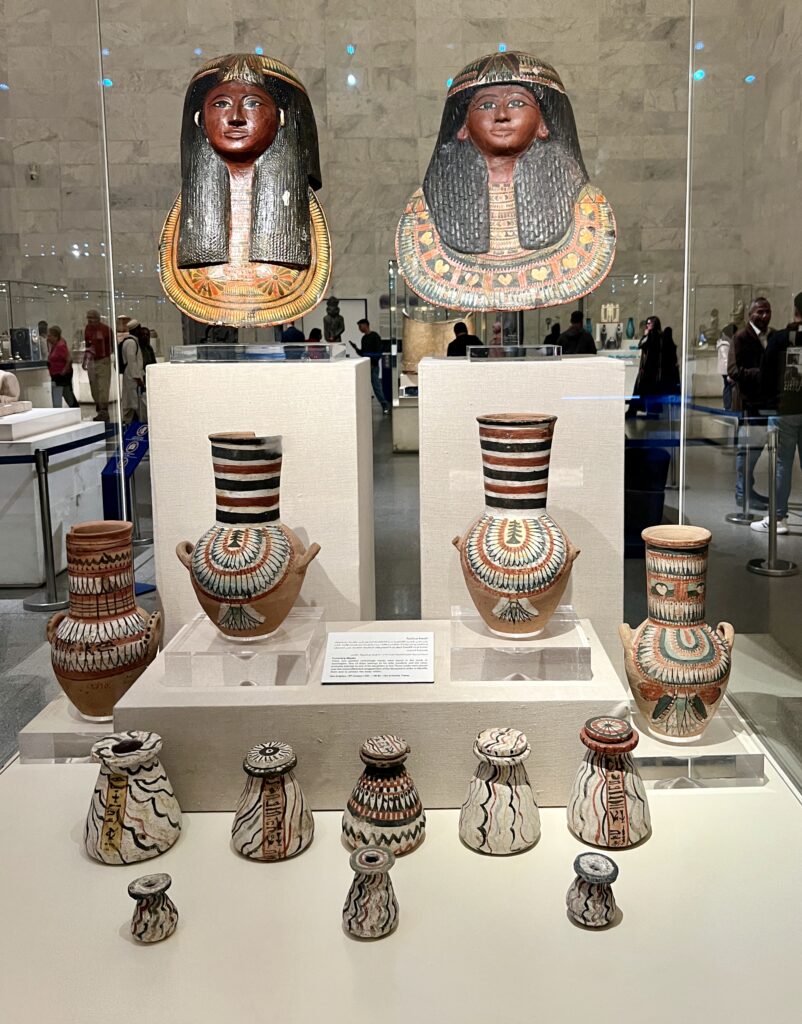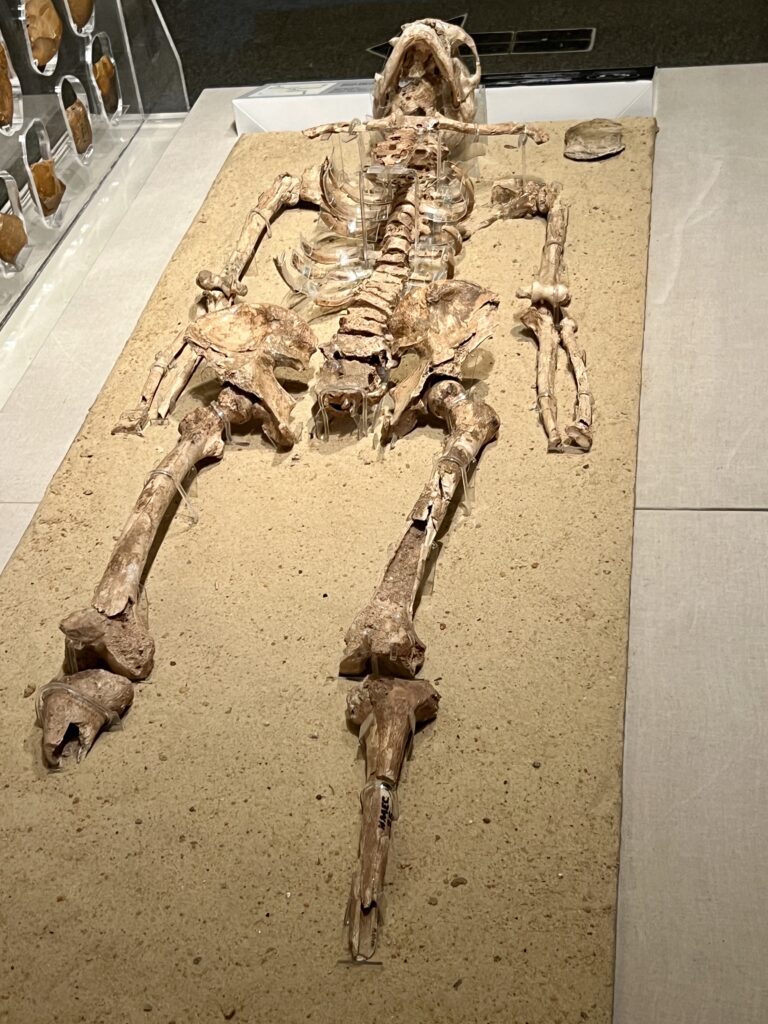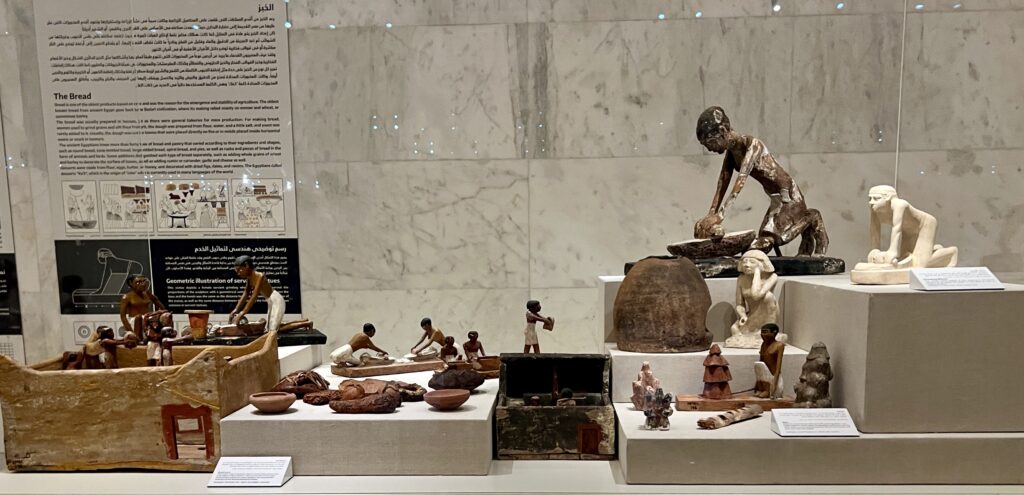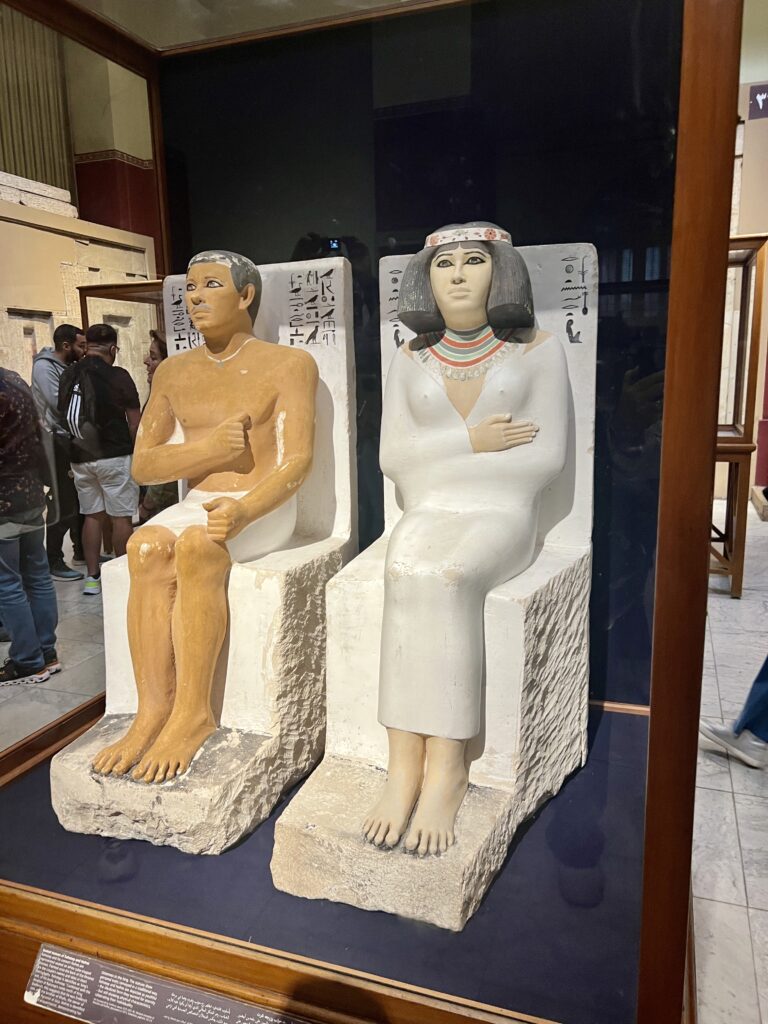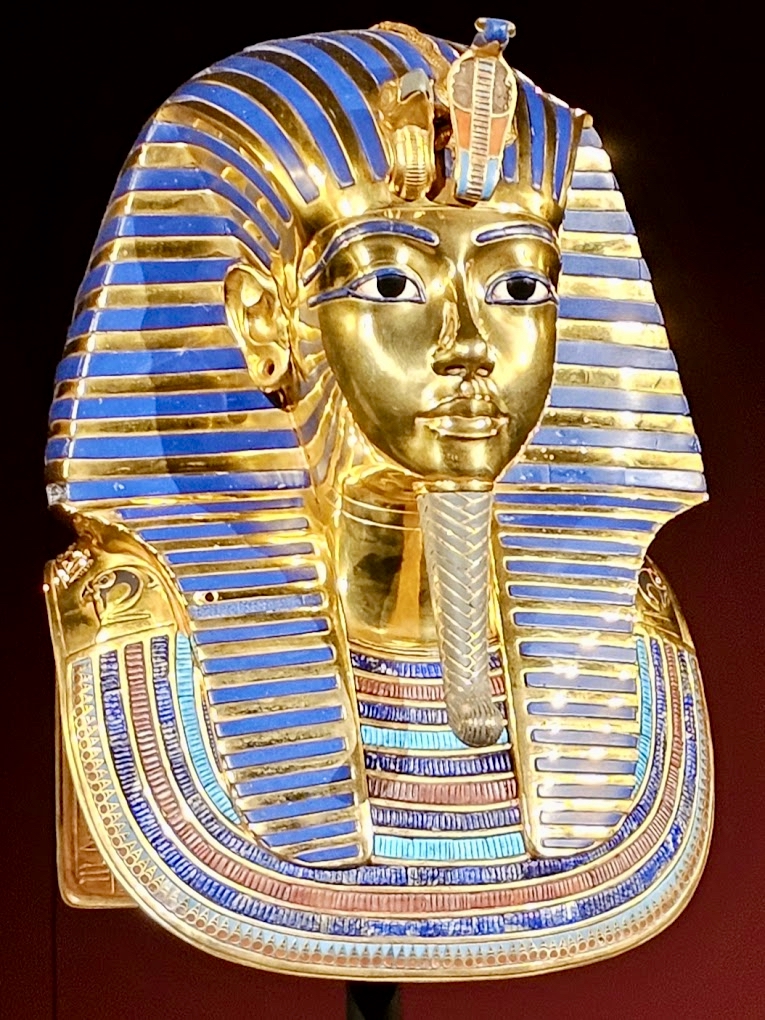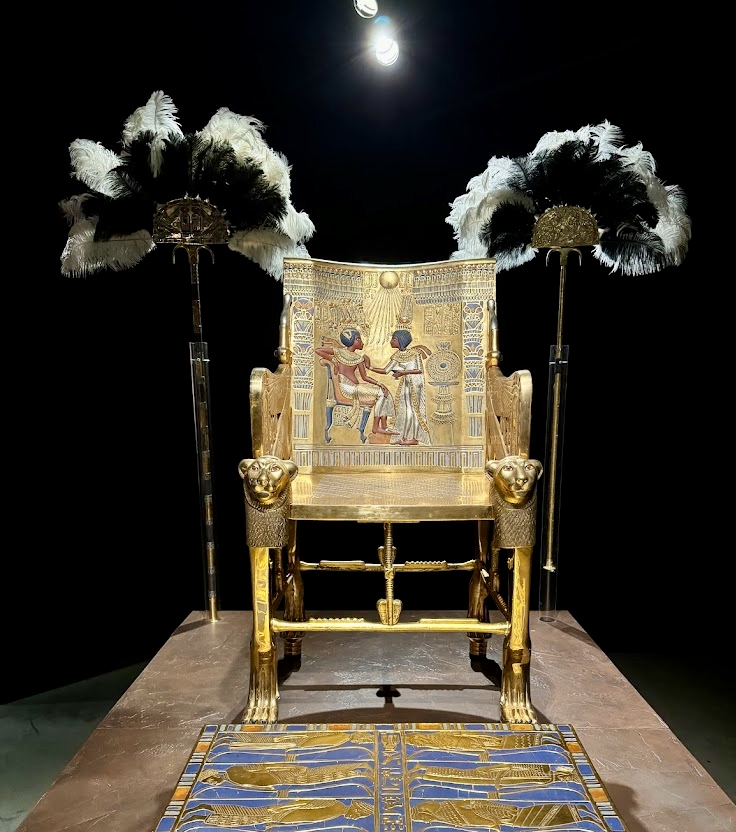Our first night on board the ship, S.S. Sphinx we sailed along the Nile to Dendera – about 45 miles from Luxor. Along the way we spent some time on the sun deck looking around and seeing what happens along the river. Most of the area between Luxor and Dendera is basically empty – yes, there were pockets of small communities and some very large banana plantations but mostly open countryside. The desert is never far from the river for sure.
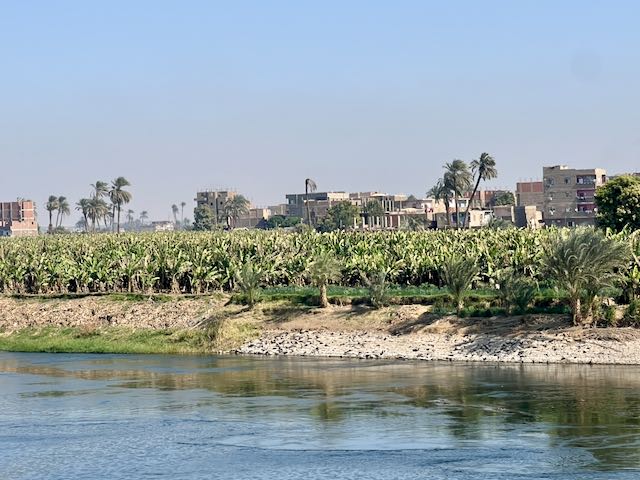
The following morning, bright and early (which became the norm for this adventure) we boarded our bus and went to the Temple of Hathor. The Dendera Temple complex is one of the best-preserved temple complexes of ancient Egypt. The entirety of the complex is surrounded by a sizable mudbrick wall which was originally installed to protect the complex from the flood waters of the Nile.
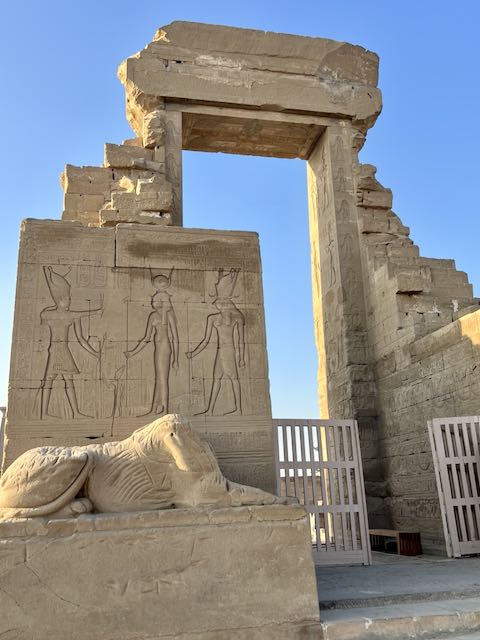
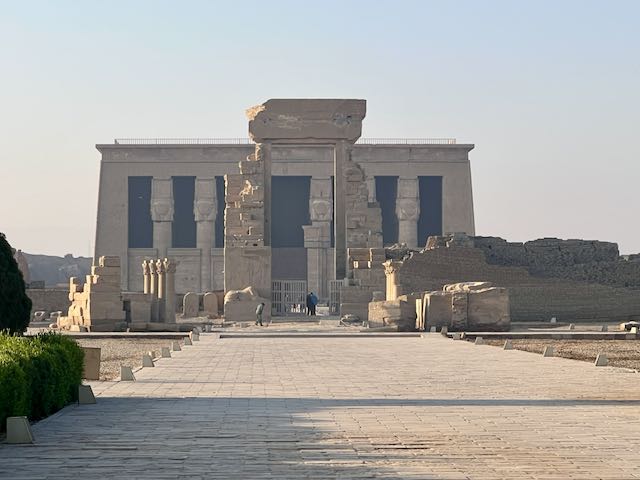
An oasis on the banks of the Nile, Dendera was inhabited by thousands at its peak. Due to its massive size, the structures throughout the complex were constructed over many eras, such as the Middle Kingdom, the Ptolemaic Era, and the period characterized by Roman provincial rule. There is evidence that there was an even earlier building on this site, circa 2250 B.C.E., which could have begun during the reign of Pepi I and completed during the reign of his son, Merenre Nemtyemsaf I.
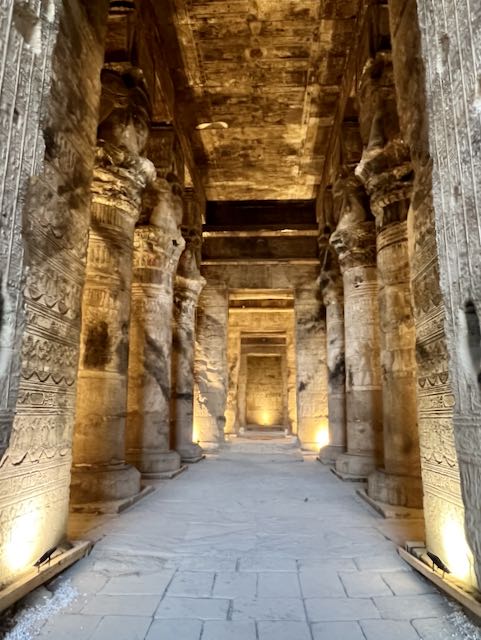
If there is one structure that commands the attention of those who visit, it is the Temple of Hathor. The original temple structure underwent continuous modifications throughout the Middle Kingdom and up until the beginning of the reign of the Roman emperor Trajan. The existing temple’s structure began construction in 54 B.C.E, the late Ptolemaic period, under the reign of Ptolemy Auletes. The hypostyle hall was built in the Roman period under Tiberius.
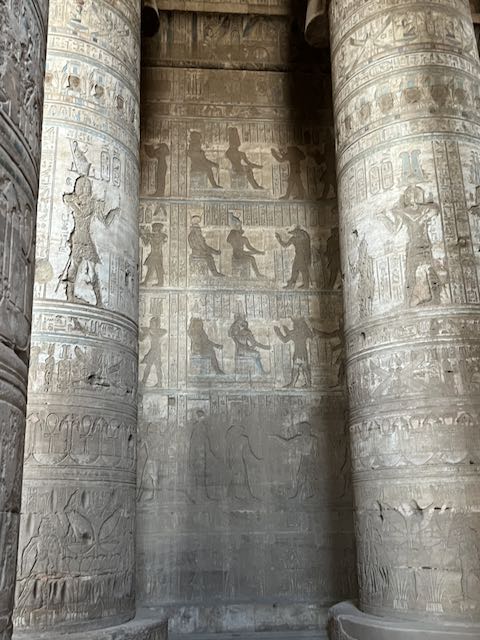
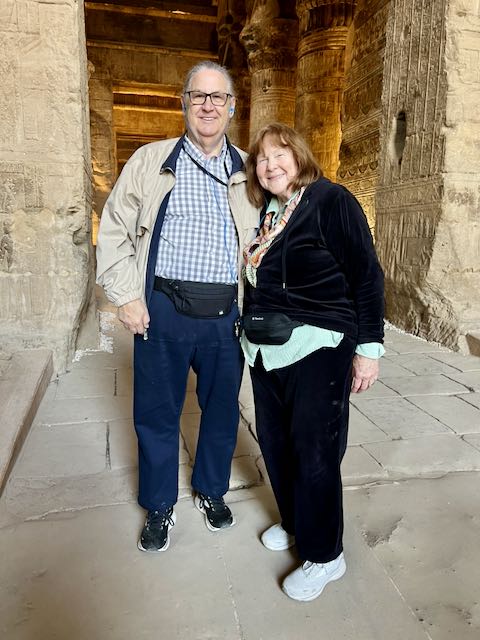
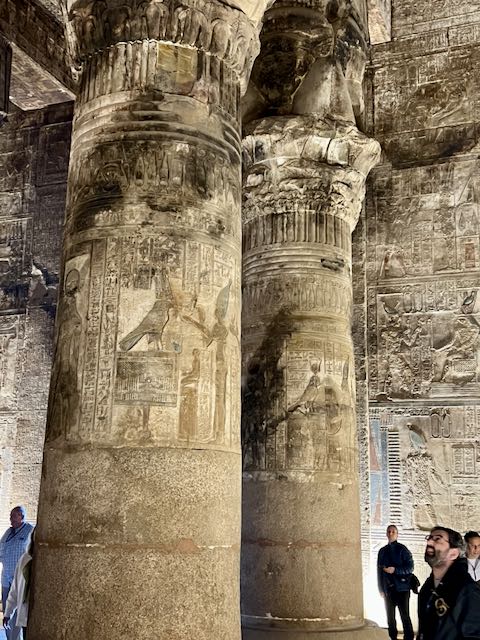
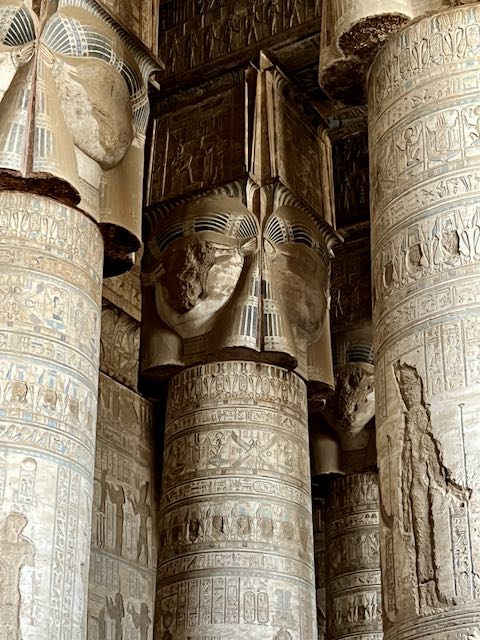
The God Hathor, who is honored by this temple, was among the most important and popular deities in ancient Egypt. She was associated with music, joy, dance and motherhood; she was also known as the lady of the sky. The complex in Dendera was the main cult center to honor this God.
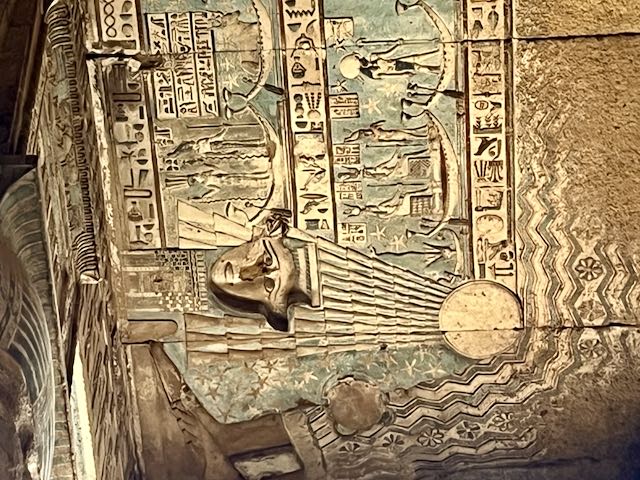
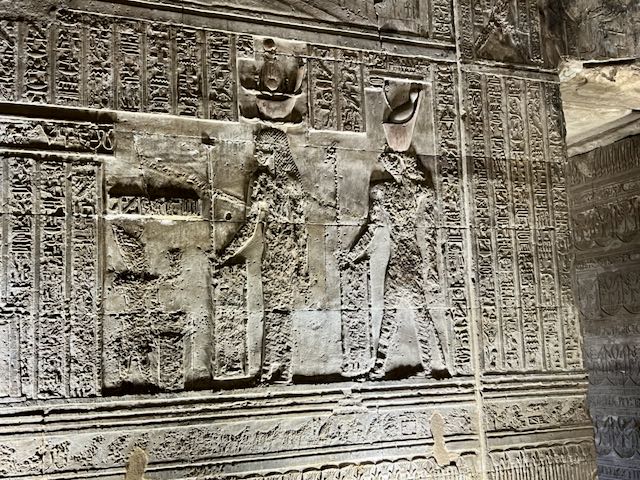
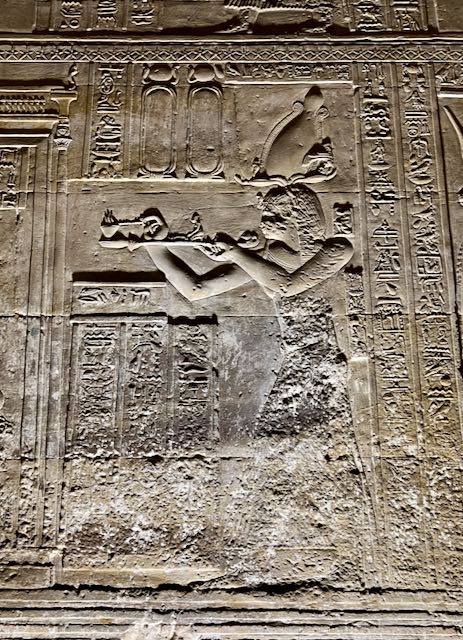
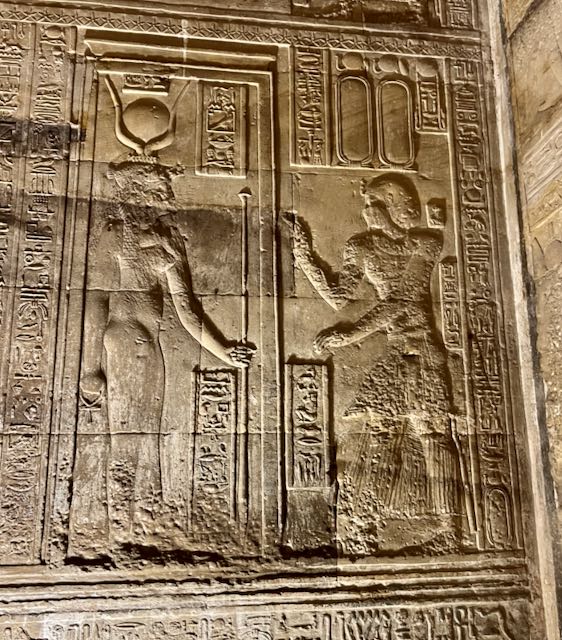
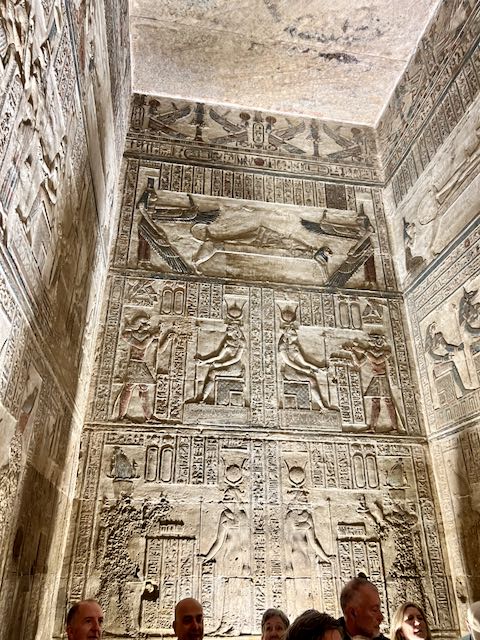
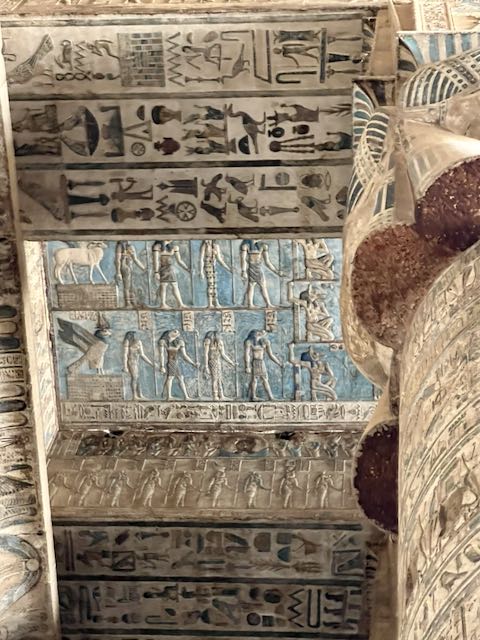
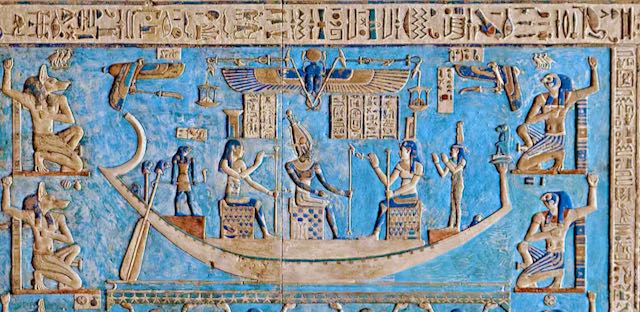
Even after a couple thousand years, the Temple is one of the most colorful in Egypt, with an intricately detailed ceiling and one of the most awe-inspiring hypostyle halls that we saw in Egypt.
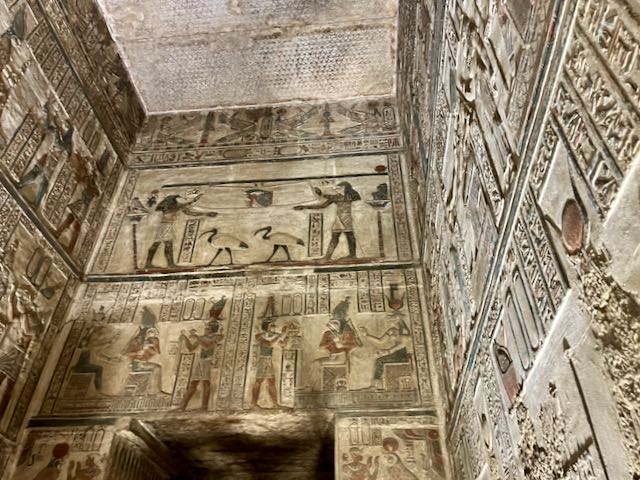

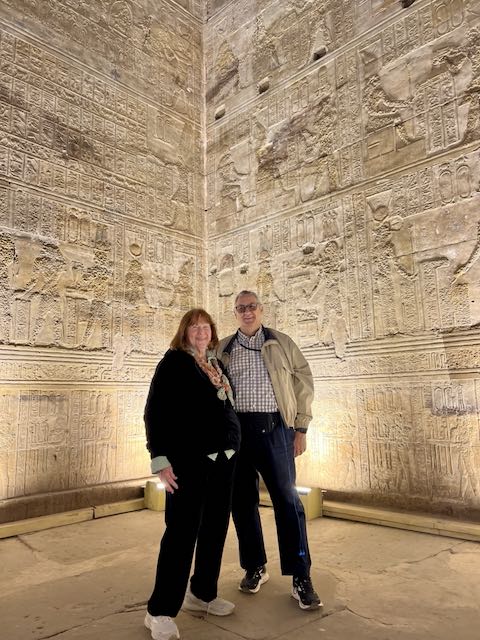
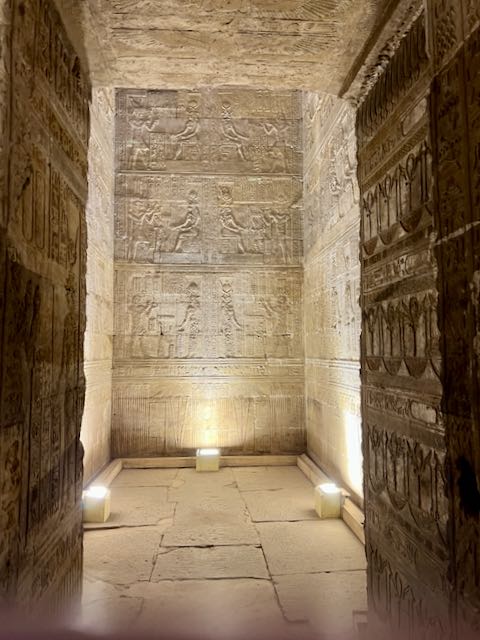
This is the inner most room of the Temple and would have been the most holy. Decorations on all the walls and ceilings were amazing.
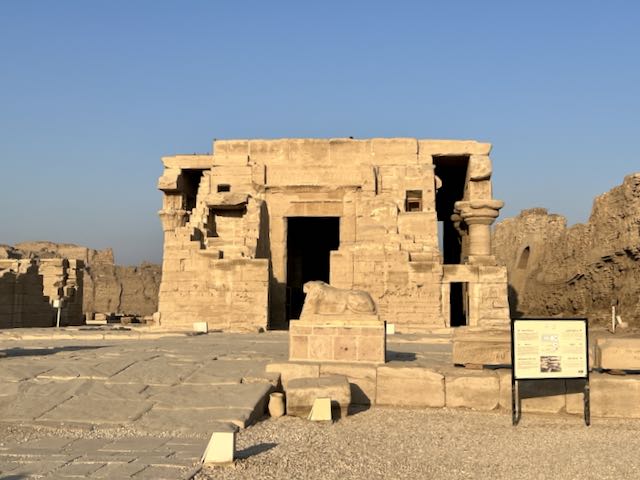
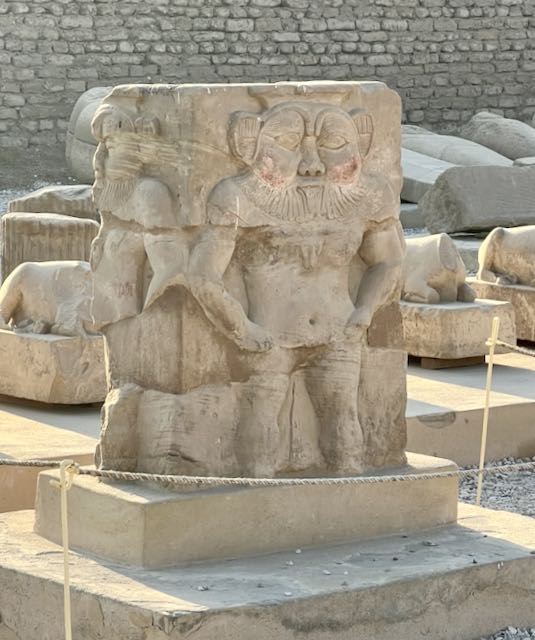
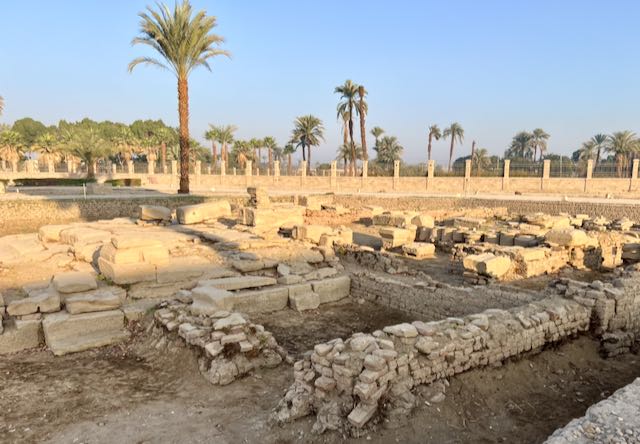
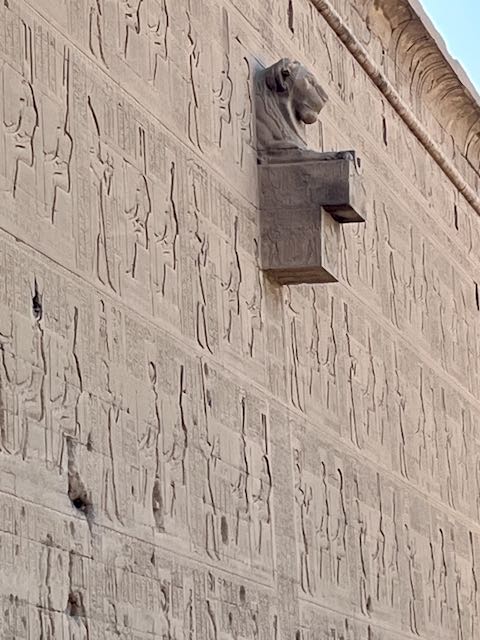
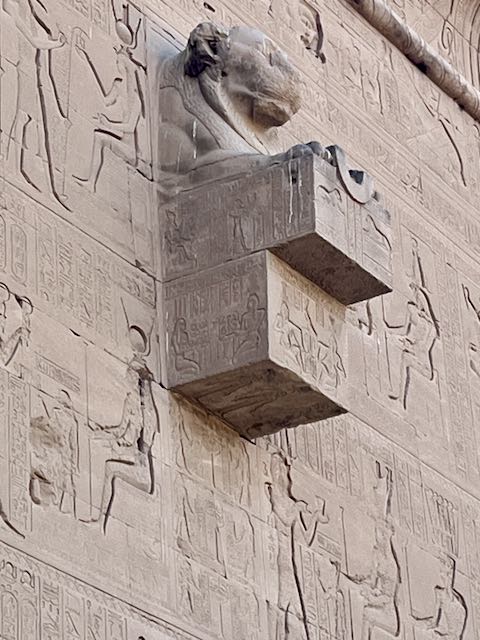
The building is fully roofed and has been for centuries. This gargoyle was on the exterior of the building. Beautiful carved.
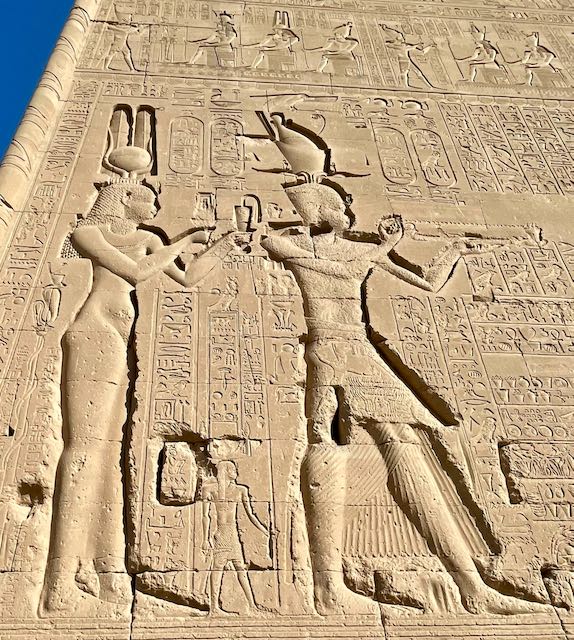
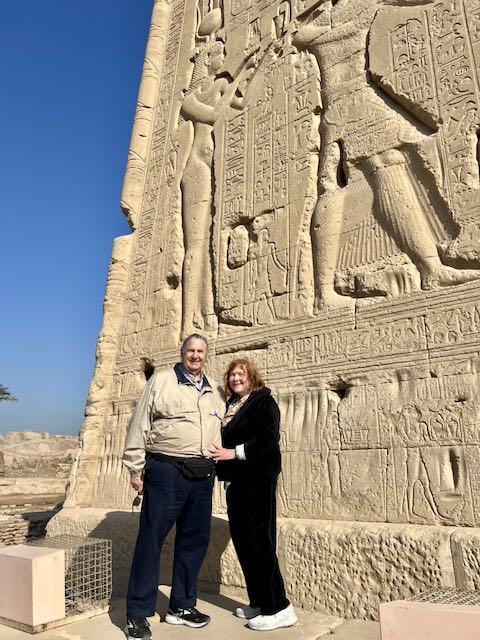
The scene portrays Cleopatra VII, the last Greek ruler of Egypt, and her son Caesarion making offerings to the goddess. The only know depiction of Cleopatra
After getting back to the Ship, it set sail to return to Luxor to stage for tomorrow’s adventures. However, once we were underway, I was able to get a tour of some of the spaces not normally open. We started in the Bridge to meet the Capitan and from there went to the Engine Room, Laundry and finally the Kitchen.
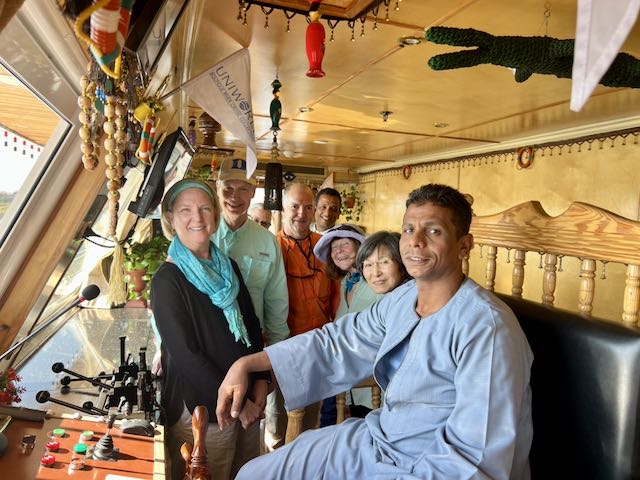

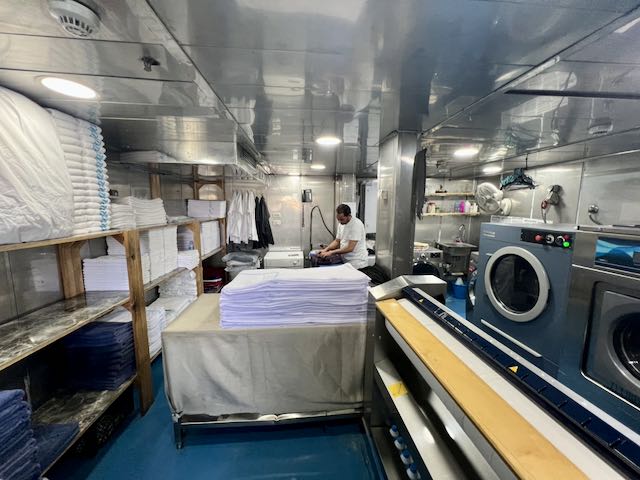

After my tour it was time to just relax and enjoy cursing along – heading back to Luxor for tomorrows adventures


